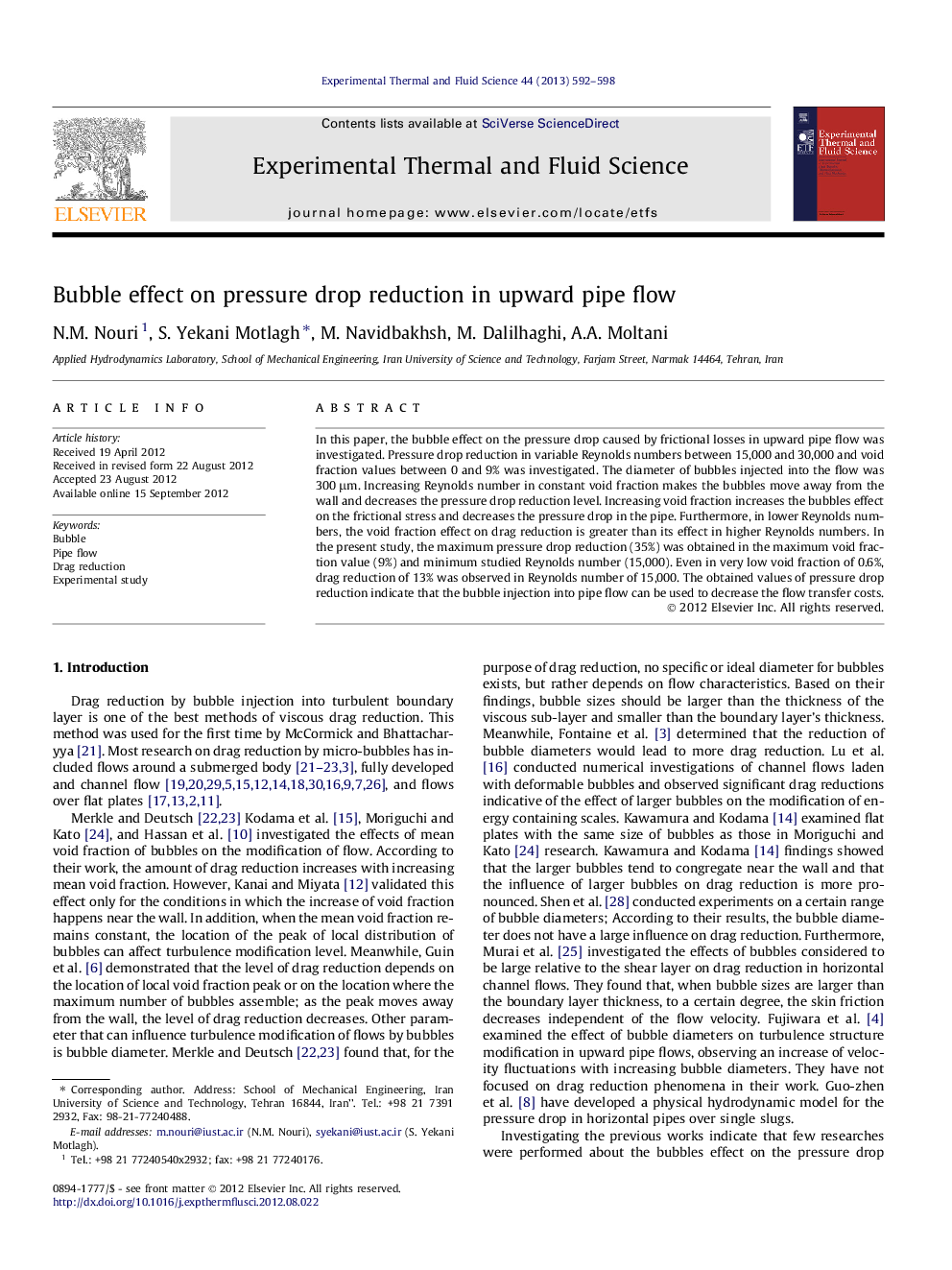| Article ID | Journal | Published Year | Pages | File Type |
|---|---|---|---|---|
| 651547 | Experimental Thermal and Fluid Science | 2013 | 7 Pages |
In this paper, the bubble effect on the pressure drop caused by frictional losses in upward pipe flow was investigated. Pressure drop reduction in variable Reynolds numbers between 15,000 and 30,000 and void fraction values between 0 and 9% was investigated. The diameter of bubbles injected into the flow was 300 μm. Increasing Reynolds number in constant void fraction makes the bubbles move away from the wall and decreases the pressure drop reduction level. Increasing void fraction increases the bubbles effect on the frictional stress and decreases the pressure drop in the pipe. Furthermore, in lower Reynolds numbers, the void fraction effect on drag reduction is greater than its effect in higher Reynolds numbers. In the present study, the maximum pressure drop reduction (35%) was obtained in the maximum void fraction value (9%) and minimum studied Reynolds number (15,000). Even in very low void fraction of 0.6%, drag reduction of 13% was observed in Reynolds number of 15,000. The obtained values of pressure drop reduction indicate that the bubble injection into pipe flow can be used to decrease the flow transfer costs.
► Pressure drop reduction in upward bubbly pipe flow for different Reynolds numbers and void fraction values was studied. ► Increasing Reynolds number in constant void fraction decreases the pressure drop reduction. ► Increasing void fraction increases the bubbles effect on the frictional stress and decreases the pressure drop. ► In lower Reynolds numbers, the void fraction effect on drag reduction is greater than its effect in higher Reynolds. ► Maximum pressure drop reduction was 35% obtained in void fraction of 9% and Reynolds number of 15,000.
